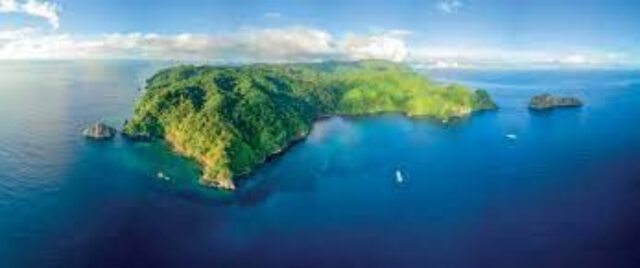The President of Costa Rica, Carlos Alvarado, signed a decree this past week to expand the Isla del Coco National Park and the Bicentennial Marine Management Area, thus increasing its marine protection from 2.7% to approximately 30%.
The Isla del Coco National Park will go from 2,034 square kilometers to 54,844 and will include the conservation of seamounts, while the Bicentennial Marine Management Area will increase from 9,649 km2 to 106,285.56 km2, and will be a rectangle that will promote connectivity to the south between the Cordillera Volcánica del Coco.
“The key in the end is to understand that this is one more milestone, many things have to be complemented, we are not talking about a paper park, we do not intend that, what we want is for it to be a national park and a marine management area that they are going to work properly in a comprehensive way,” said the Minister of Environment and Energy, Andrea Meza, at the event.
According to the authorities, marine and coastal resources have historically been viewed only from an extraction perspective, without granting the true value they have for productivity, resilience and in general, the sustainability of livelihoods in coastal communities, for what it is time to give value to everything they offer.
Keeping 30%

“Science has concluded that to reduce the accelerated loss of biodiversity that we are experiencing, we must protect our terrestrial and marine ecosystems (…) Part of our global commitment is to help stop the accelerated loss of species and protect the vital ecosystems that are the source of our food and economic security,” said President Alvarado.
Costa Rica has a land area of 51,100 square kilometers and has 568,054 square kilometers of marine surface, in which 6,700 species have been identified, 3.5% of the marine species reported globally, of which 90 are endemic.
The country has been internationally recognized for its sustainability and protection of nature, so protecting marine areas is not an alien challenge, since in the case of land and insular areas it protects 26%. However, the effort will have to be great in the marine part.
Therefore, the signing of this decree is part of the various actions that Costa Rica undertakes in the fight against climate change, including the High Ambition Coalition for Nature and People, an alliance led by Costa Rica, France and United Kingdom, whose goal is to conserve 30% of land and sea surface by 2030.
Unique site
The Isla del Coco National Park and the seamounts that it houses have been classified as unique sites for their richness and abundance of species that use their waters, so that their protection ensures a high percentage of the biodiversity of the country and the world.
The island is home to 1,688 species of marine fauna, of which 45 are endemic, representing 47.4% of all endemic marine species in Costa Rica. In addition, Cocos Island is a World Heritage Site and is part of a marine corridor in the Pacific that it shares with Ecuador, Colombia and Panama.

